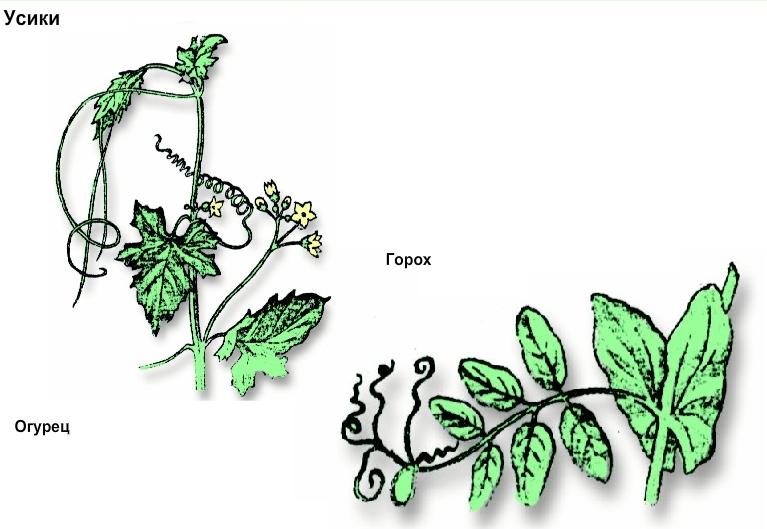Modifications of ground shoots
In some plants, in the process, certain parts of the shoots have changed a lot: the leaves, for example, have turned into antennae or spines. What could be the reason for such a transformation?
Shoot modification
Shoot modification associated with adaptation to life in different environmental conditions and the performance of additional functions. For the first time, modifications of the main organs of plants were scientifically described at the end of the 18th century by the great German poet, philosopher and scientist Johann Wolfgang Goethe. He developed the theory of metamorphosis (modifications) of plants. Goethe paid special attention to the leaves - the most variable parts of the shoots. Leaves can acquire adaptations to different environmental conditions and change on one during the life of the plant.
succulent shoots
Plants living in conditions of prolonged lack of water (cacti of South America, Euphorbia of Africa) have succulent shoots. They store water and create organic matter.
In many plants growing in hot and dry places (aloe,), water is stored in the leaves. To reduce the evaporation of moisture from the leaf surface, thick leaves are covered with a wax coating.
Cactus leaves have turned into spines, which can significantly reduce the evaporation of water in dry conditions.
Leaves modified into spines are also found in other plants, such as barberry. The hawthorn, wild pear, buckthorn also have thorns, but they originated from shortened shoots.
The formation of spines of any origin is associated with a lack of moisture. In some thorny plants, when grown in artificial wet conditions, shoots with leaves grow instead of stem spines.
Many climbing plants have tendrils that have the ability to twist around a support (other plants, hedges, stones). The stem of such plants is usually thin and weak, it is not able to independently maintain a vertical position.
These are modified leaves, part of a leaf or whole shoots. So, the upper part of the leaf turns into tendrils, the whole plate turns into a branched tendril in chips, and the entire shoot in grapes.

head of cabbage
head of cabbage- an example of a modified kidney. It is formed only in cultivated cabbage. Normal green leaves appear first. Then the deployment of leaves from the apical bud stops. The kidney begins to greatly increase in size and turns into a head of cabbage. The leaves of the head are almost colorless. contain few chloroplasts, are fleshy and accumulate a lot of water and soluble reserve substances. The emergence of the head of cabbage is associated with the origin of cabbage. The birthplace of the ancestral species of cultivated cabbage is the Mediterranean.







